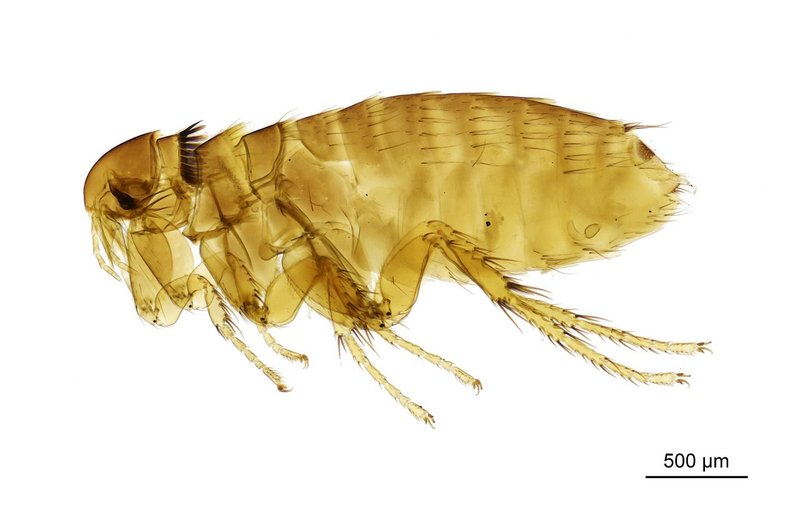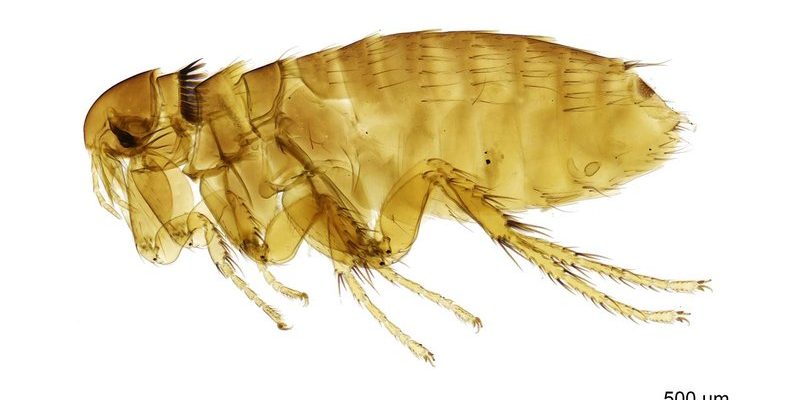
Fleas belong to a group of insects known as Siphonaptera, and they’re not just limited to cats and dogs. They can jump onto humans, too! But what else do we know about them? From their unique biology to their impressive survival skills, let’s dive into some fascinating facts about fleas that will leave you a little more intrigued the next time you see one.
1. The Jumping Champions of the Insect World
Fleas are famous for their incredible jumping ability. They can leap up to 200 times their body length! To put that into perspective, if a human could jump like a flea, it would be equivalent to jumping more than 1,000 feet in a single bound. This remarkable ability is due to the unique structure of their legs, which store energy much like a compressed spring.
When a flea prepares to jump, the muscles in its legs tighten, creating tension. Then, when it releases this tension, it launches itself into the air. That’s some serious power for such a tiny creature! You might be wondering how they manage to land safely. Their bodies are designed with a specialized structure that helps absorb the impact, so they don’t just crash back to the ground.
2. Fleas Have Been Around for a Long Time
Fleas are not just a modern-day nuisance; they’ve been around for millions of years. In fact, fossil evidence suggests that fleas appeared around 100 million years ago, during the age of the dinosaurs. Imagine that for a second! While T-Rex was roaming the Earth, fleas were already finding ways to suck blood.
This long history means that they’ve evolved to be incredibly adaptable. They can survive in a variety of environments, making them tough little survivors. Their resilience and endurance are part of the reason they continue to thrive today, much to our chagrin.
3. Fleas Can Survive Without Food for Extended Periods
Here’s the thing: fleas are not just opportunistic feeders; they’re masters at surviving. A hungry flea can live for up to several months without a meal! When food is scarce, they enter a sort of dormant state—like hitting the snooze button on life. This dormant state helps them conserve energy until they find a host to feed on.
You can think of fleas as the ultimate survivalists—they can wait patiently, sometimes for over a year, for the right opportunity to come along. This survival strategy is one reason why getting rid of fleas can be such a challenge.
4. Fleas Can Reproduce at an Astonishing Rate
If you thought the challenge of getting rid of fleas was tough, wait until you hear about their reproduction. A female flea can lay about 40 to 50 eggs a day! That means in just a few weeks, a single flea can turn into an infestation of thousands.
The eggs are usually laid on the host animal but can fall into the environment, like your carpets or your pet’s bedding. The eggs hatch into larvae that feed on organic matter, including adult flea droppings (yum!). This rapid reproduction is a big reason why flea control is so important—if you don’t act quickly, it can spiral out of control.
5. Fleas Are Excellent Hiders
One of the most annoying things about fleas is how well they can hide. Their small size, combined with their ability to jump, makes them difficult to spot. They often burrow into your pet’s fur and hide in carpets, cracks in the floor, or even in your furniture.
Fleas are smart little creatures, too—they’ve adapted to avoid detection. They’re not just waiting for hosts to come around; they’re also lurking, ready to jump onto unsuspecting victims. To make matters worse, flea larvae can also camouflage themselves in their surroundings, making them even trickier to find and eliminate.
6. Fleas Can Carry Diseases
Though fleas might seem harmless, they can actually carry and transmit diseases. One of the most infamous examples is the plague, which is caused by bacteria that can be passed on through flea bites. Historically, the plague led to devastating outbreaks, affecting millions of lives.
But that’s not all. Fleas can also transmit tapeworms and can be vectors for other infections, too. This is why flea control is essential—keeping your pets flea-free helps protect their health and yours. Regular vet visits and preventive treatments are key in managing flea infestations effectively.
7. Their Bloodsucking Skills Are Impressive
Fleas are blood-feeding insects, and their mouthparts are specifically designed for piercing skin and sucking blood. When they bite, they inject saliva that acts as an anticoagulant, preventing the blood from clotting while they feed. This is why flea bites can be so itchy and irritating!
Interestingly, fleas can consume up to 15 times their body weight in blood each day. That’s a lot of blood for such a tiny bug! This feeding habit is not just for sustenance—it’s also crucial for reproduction, as the nutrients they get help them produce more eggs.
8. Fleas Have Their Own Unique Adaptations
Every species of flea has its own unique adaptations that help it survive in various environments. For example, the cat flea is the most common type found on pets, but there are many other species, each adapted to different hosts. Some fleas prefer specific mammals like rats or rabbits, while others might be more generalized.
These adaptations include things like body shape, size, and even the ability to survive extreme temperatures. Some fleas can tolerate intense heat and cold, making them tough to eliminate. Understanding these adaptations can help in developing effective flea control strategies.
9. Fleas Are Found All Over the World
Fleas are not picky about where they live. They can be found on every continent except Antarctica. From cities to rural areas, these little pests have made themselves at home in various environments.
This global presence means that flea infestations can be a problem anytime, anywhere. Warmer climates can see higher flea populations, but even in colder regions, fleas can thrive indoors, especially during the winter months. It’s a reminder of just how adaptable and widespread these creatures are.
10. Flea Control Is Essential!
With all these fascinating facts about fleas, it’s clear that they’re more than just annoying little bugs. Effective flea control is crucial not just for your pets but also for your home. Regular treatments and preventive measures can help keep these pests at bay.
You might consider various options like topical treatments, oral medications, or flea collars for your pets. Additionally, regular cleaning and vacuuming can help eliminate fleas and their eggs from your living space. Just remember, the sooner you tackle a flea problem, the easier it will be to manage!
Fleas are small but mighty creatures that have captured our attention for centuries. With their extraordinary abilities, fascinating biology, and significant impact on health, they’ve earned their place in the spotlight. So, next time you see one, maybe think twice before just swatting it away. There’s a whole world of wonders hidden in those tiny jumps!

